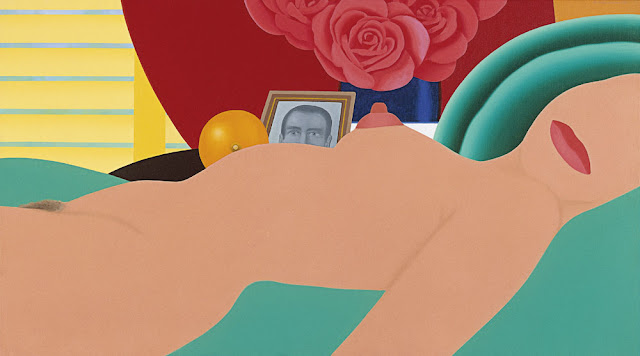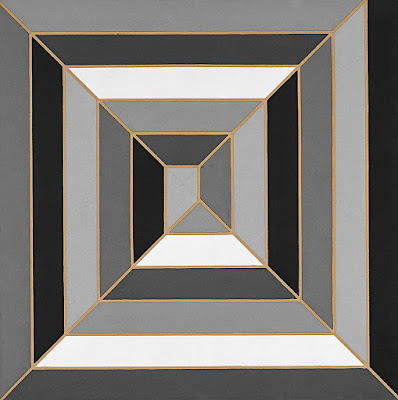 |
| Roy Lichtenstein Woman in Bath 1963 oil on canvas Museo Thyssen-Bornemisza, Madrid |
"I remember how startled I was when, early in 1962, I realized that I was becoming obsessed with color as having meaning not only in counterpoint to the structures of fences and the bulks of weights – which were, I had thought, my primary concern – but also in itself, as holding meaning all on its own. As I worked along, making the sculptures as they appeared in my mind's eye, I slowly came to realize that what I was actually trying to do was to take paintings off the wall, to set color free in three dimensions for its own sake. This was analogous to my feeling for the freedom of my own body and my own being, as if in some mysterious way I felt myself to be color. The feeling grew steadily stronger until the setback of my experience in Japan when in despair that my work no longer materialized somewhere in my head, I began to concentrate on the construction of aspects of form, for me a kind of intellectual exercise. When we came back to America in 1967, I returned home to myself as well as to my country, abandoned all play with form for the austerity of the columnar structure, and let the color, which must have been gathering force within me somewhere, stream down over the columns on its own terms."
– from Daybook : the journal of an artist by Anne Truitt (New York : Pantheon, 1982)
 |
| Richard Estes Telephone Booths 1967 acrylic on masonite Museo Thyssen-Bornemisza, Madrid |
 |
| Richard Estes Nedick's 1970 oil on canvas Museo Thyssen-Bornemisza. Madrid |
 |
| Richard Estes People's Flowers 1971 oil on canvas Museo Thyssen-Bornemisza, Madrid |
 |
| Richard Lindner Moon over Alabama 1963 oil on canvas Museo Thyssen-Bornemisza, Madrid |
 |
| Richard Lindner Thank You 1971 oil on canvas Museo Thyssen-Bornemisza, Madrid |
 |
| James Rosenquist Smoked Glass 1962 oil on canvas Museo Thyssen-Bornemisza, Madrid |
 |
| Rom Wesselmann Nude No. 1 1970 oil on canvas Museo Thyssen-Bornemisza, Madrid |
"At the level of serially produced objects, by contrast, bright color is always apprehended as a sign of emancipation – in fact it often compensates for the absence of more fundamental qualities (particularly a lack of space). The discrimination here is obvious: associated with primary values, with functional objects and synthetic materials, bright, 'vulgar' colors always tend to predominate in the serial interior. They thus partake of the same anonymity as the functional object: having once represented something approaching a liberation, both have now become signs that are merely traps, raising the banner of freedom but delivering none to direct experience."
– Jean Baudrillard, from The System of Objects (1968) translated by James Benedict
 |
| Frank Stella Untitled 1966 acrylic on canvas Museo Thyssen-Bornemisza. Madrid |
 |
| Frank Stella Double Scramble 1978 oil on canvas private collection |
 |
| Mark Rothko Untitled (Green on Maroon) 1961 mixed media on canvas Museo Thyssen-Bornemisza, Madrid |
"As in written poetry, it is not the aggregation of words that counts, but the mystery of creation which yields or does not yield feeling. As in poetry, so with colors. It is the mystery of interior life which liberates, radiates and communicates. Beginning there, a new language can be freely created."
– Sonia Delaunay, On Color, 1966, translated by David Shapiro and Arthur C. Cohen
 |
| Mark Tobey Earth Rhythm 1961 gouache on cardboard Museo Thyssen-Bornemisza, Madrid |
 |
| Willem de Kooning Red Man with Mustache 1971 oil on paper, mounted on canvas Museo Thyssen-Bornemisza, Madrid |
 |
| Robert Rauschenberg Express 1963 oil, silkscreen, collage on canvas Museo Thyssen-Bornemisza, Madrid |
I am grateful for the excellent reproductions from Museo Thyssen-Bornemisza in Madrid.